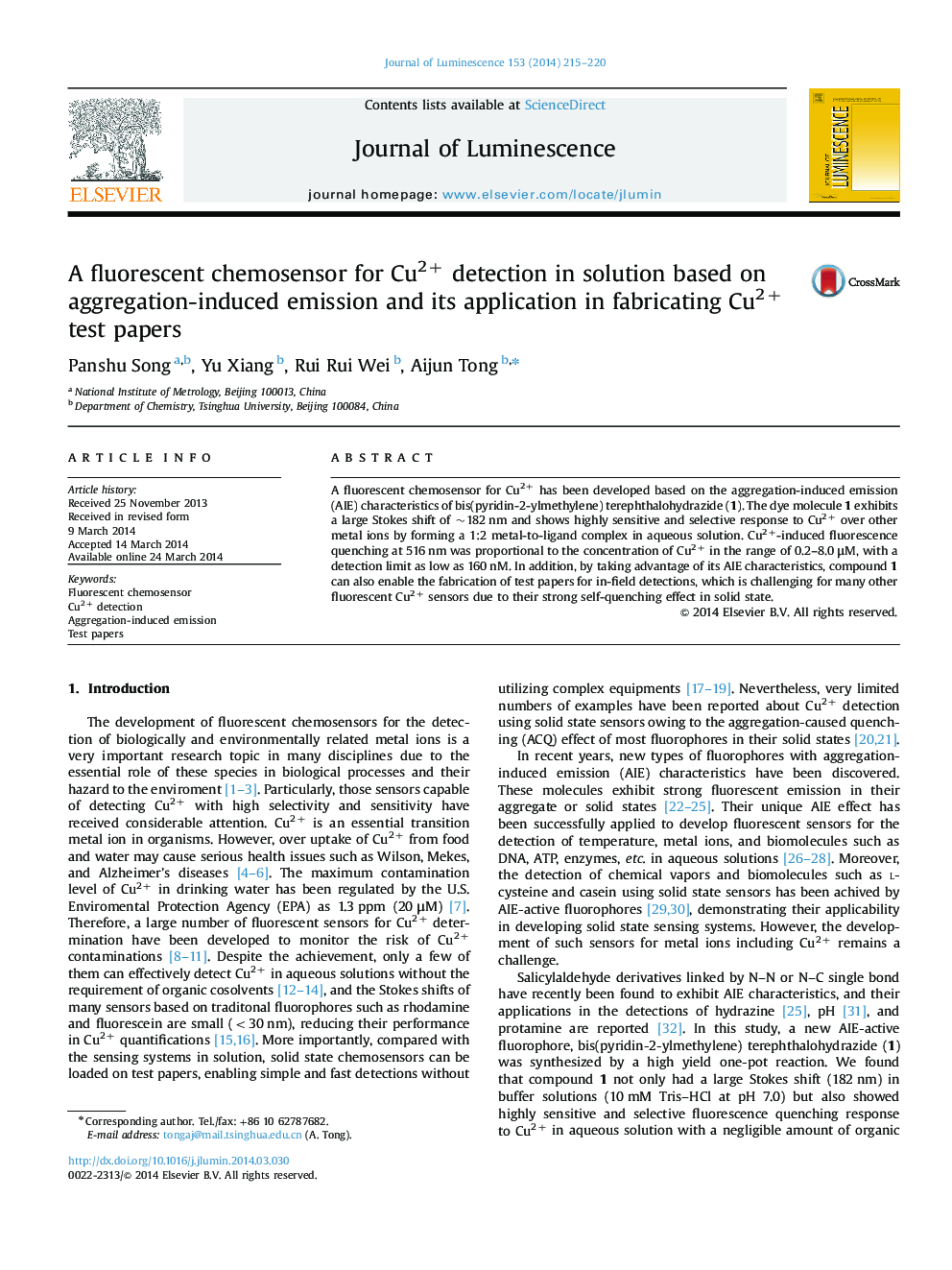| Article ID | Journal | Published Year | Pages | File Type |
|---|---|---|---|---|
| 5399687 | Journal of Luminescence | 2014 | 6 Pages |
Abstract
A fluorescent chemosensor for Cu2+ has been developed based on the aggregation-induced emission (AIE) characteristics of bis(pyridin-2-ylmethylene) terephthalohydrazide (1). The dye molecule 1 exhibits a large Stokes shift of ~182 nm and shows highly sensitive and selective response to Cu2+ over other metal ions by forming a 1:2 metal-to-ligand complex in aqueous solution. Cu2+-induced fluorescence quenching at 516 nm was proportional to the concentration of Cu2+ in the range of 0.2-8.0 μM, with a detection limit as low as 160 nM. In addition, by taking advantage of its AIE characteristics, compound 1 can also enable the fabrication of test papers for in-field detections, which is challenging for many other fluorescent Cu2+ sensors due to their strong self-quenching effect in solid state.
Related Topics
Physical Sciences and Engineering
Chemistry
Physical and Theoretical Chemistry
Authors
Panshu Song, Yu Xiang, Rui Rui Wei, Aijun Tong,
